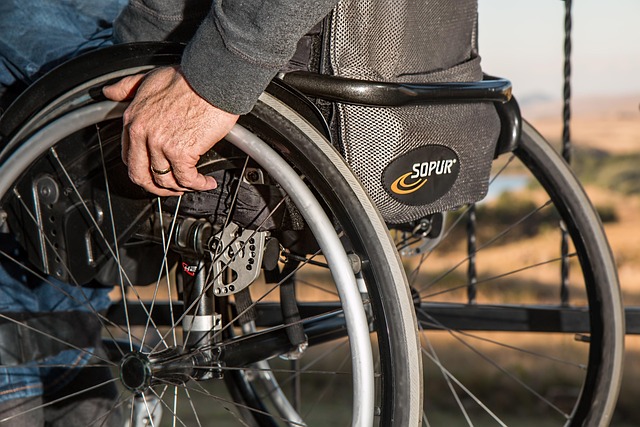The proliferation of wearable devices, smart apparel, and home‑based gym equipment has turned everyday movement into a continuous stream of measurable metrics. At the heart of this shift lies the concept of fitness data—raw signals captured by sensors that quantify heart rate, acceleration, respiration, and even blood oxygen levels. By converting these signals into actionable information, technology is redefining what it means to stay healthy, to monitor recovery, and to prevent disease before it manifests.
The Sensor Revolution in Personal Health
Modern fitness trackers rely on a diverse array of sensors. Photoplethysmography (PPG) lights count blood pulses, inertial measurement units (IMUs) capture motion, and galvanic skin response (GSR) gauges stress. Each sensor transforms a physical phenomenon into a digital data point. When combined, these data points generate a multi‑dimensional view of an individual’s physiological state, allowing algorithms to infer heart rate variability, sleep stages, or even detect arrhythmias.
From Heart Rate to Holistic Wellness
Historically, heart rate monitoring was a niche for athletes. Today, the same data streams support clinical decision‑making. For instance, continuous heart rate variability analysis can flag early signs of autonomic dysfunction in patients with diabetes. Meanwhile, sleep quality metrics derived from accelerometer and heart‑rate data help clinicians recommend personalized interventions for insomnia or sleep apnea. The depth of insight is a direct result of the increasing fidelity and variety of sensors embedded in consumer devices.
Fitness Data Meets AI and Machine Learning
Collecting raw metrics is only the first step. Advanced analytics layer artificial intelligence to interpret patterns that are invisible to the human eye. Machine learning models trained on millions of data points can distinguish between a high‑intensity interval workout and a cardiac episode. These systems also adapt to individual variability—recognizing that a “normal” resting heart rate for one person may be elevated for another. The fusion of sensors and AI creates a personalized health ecosystem.
Real‑Time Coaching and Adaptive Workouts
Smart gyms and app‑based training platforms use fitness data to deliver on‑the‑spot feedback. If a user’s breathing rate exceeds a threshold during a set, the system can prompt a breathing exercise or suggest a lighter load. Conversely, if performance metrics plateau, the platform may adjust intensity or introduce new modalities. These real‑time coaching loops enhance motivation and reduce the risk of overtraining.
Clinical Applications and Preventive Care
Beyond performance, fitness data supports preventive medicine. Continuous monitoring of blood oxygen saturation, for example, can alert patients with chronic obstructive pulmonary disease to subtle drops before hospitalization is required. Similarly, step count trends may flag early mobility decline in seniors, enabling timely interventions. Health systems increasingly integrate patient‑generated data into electronic health records, creating a comprehensive view that informs treatment plans.
Remote Patient Monitoring in a Post‑COVID Era
The pandemic accelerated adoption of remote monitoring. Patients with cardiovascular conditions can now transmit real‑time fitness data to clinicians, who can observe arrhythmias or irregular heart rate patterns via secure dashboards. This model reduces the need for in‑person visits, lowers costs, and empowers patients to engage actively in their care. As sensor accuracy improves, the boundary between clinical and home settings continues to blur.
Privacy, Security, and Data Governance
With great data comes great responsibility. Fitness data is highly personal, containing sensitive health information that could be misused if inadequately protected. Regulatory frameworks such as GDPR in Europe and HIPAA in the United States impose strict requirements on data collection, storage, and sharing. Companies are responding with encryption, tokenization, and anonymization techniques, yet the risk of breaches remains a pressing concern for users and regulators alike.
Building Trust Through Transparency
Transparent data policies and user consent mechanisms are essential. Providing clear explanations of how fitness data is used—whether for personalized coaching or research—helps users feel secure. Moreover, giving individuals control over data sharing—such as opting out of analytics for commercial purposes—aligns with emerging privacy norms and fosters a culture of trust.
Future Horizons: Emerging Sensor Technologies
Researchers are exploring next‑generation sensors that could capture even richer health signals. Breath‑analysis sensors can detect biomarkers for metabolic health, while flexible textile electrodes embedded in clothing monitor muscle activity and fatigue. Bioimpedance sensors measure fluid distribution, offering insights into hydration and heart failure status. As these technologies mature, the granularity of fitness data will continue to expand, opening new therapeutic possibilities.
Integrating Environmental Context
Fitness data is not isolated from surroundings. Incorporating environmental sensors—such as air quality indices, temperature, and altitude—enables context‑aware recommendations. For instance, a high‑altitude runner’s oxygen saturation can be interpreted differently than a sea‑level performance, guiding pacing strategies and recovery protocols. The integration of multimodal data streams promises a holistic view of health that accounts for both internal physiology and external conditions.
Conclusion: A New Era of Health Empowerment
The convergence of sophisticated sensors, machine intelligence, and user‑centric platforms has elevated fitness data from a niche metric to a cornerstone of modern health care. By providing continuous, actionable insights, this technology empowers individuals to make informed choices, clinicians to intervene early, and researchers to uncover patterns that were previously invisible. As sensor fidelity improves and ethical frameworks strengthen, the promise of fitness data to transform health outcomes will only grow more tangible.




